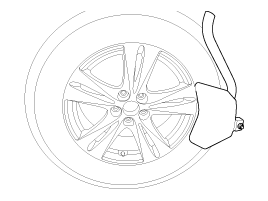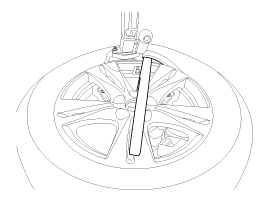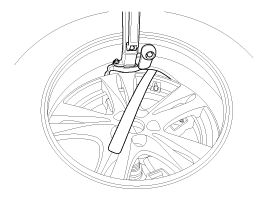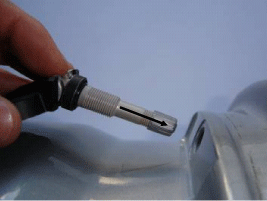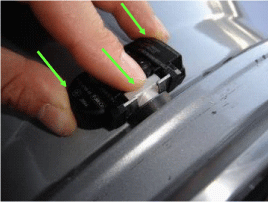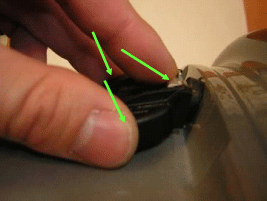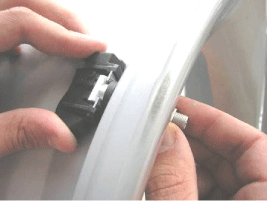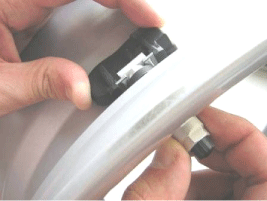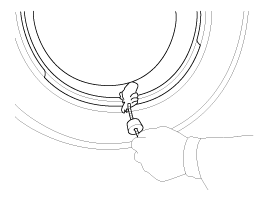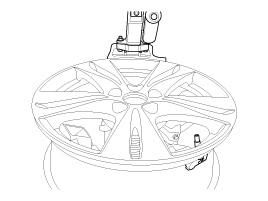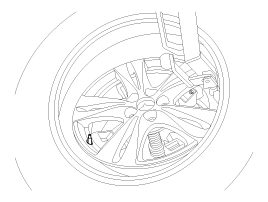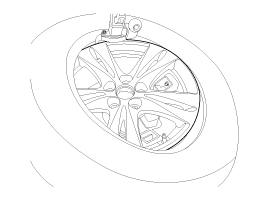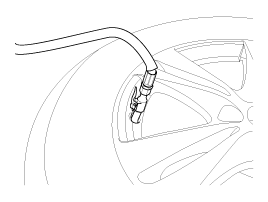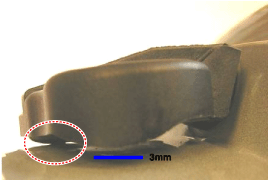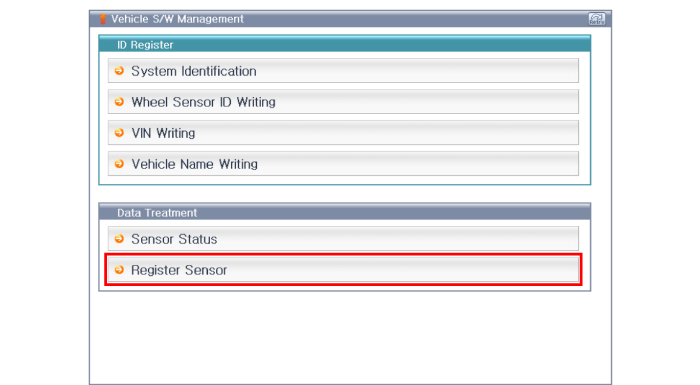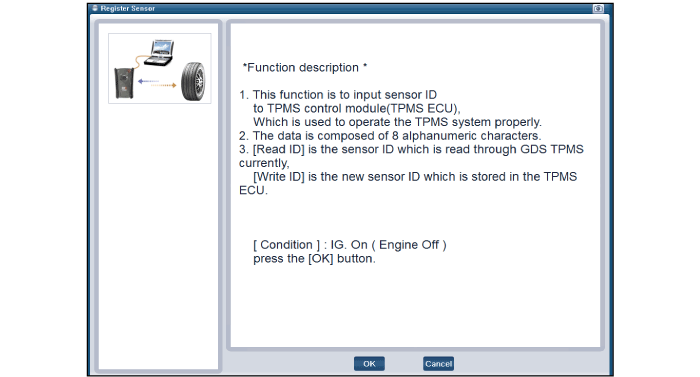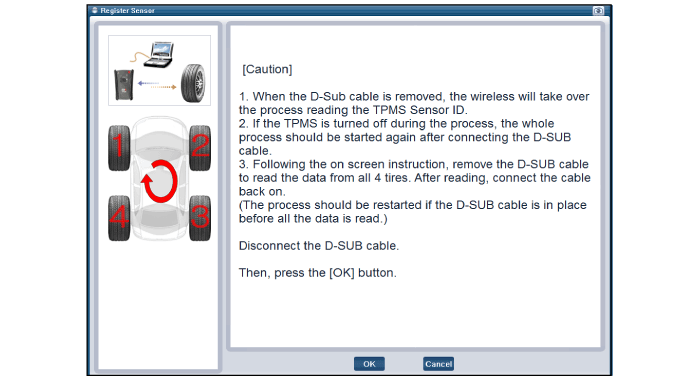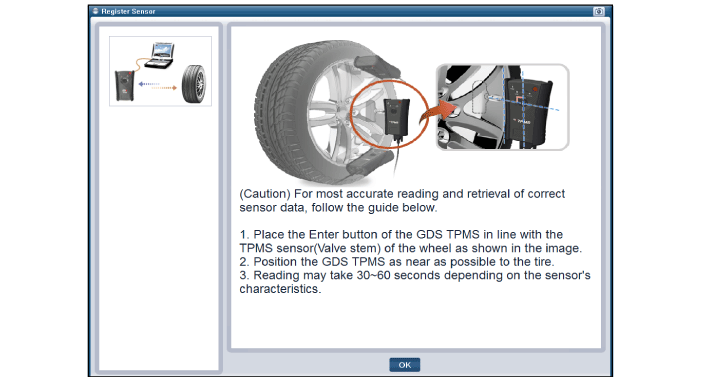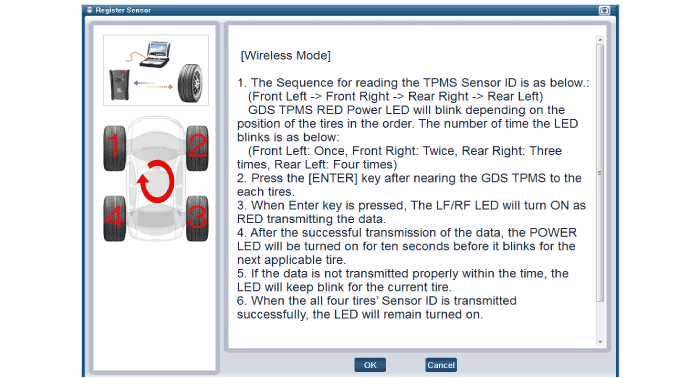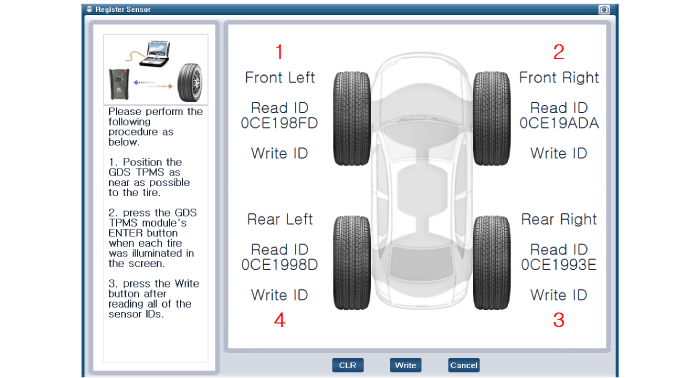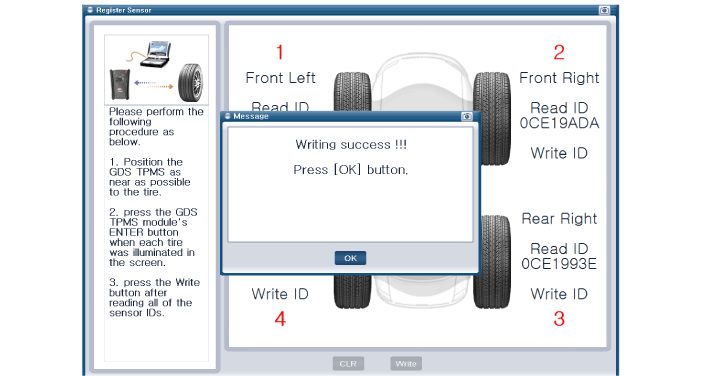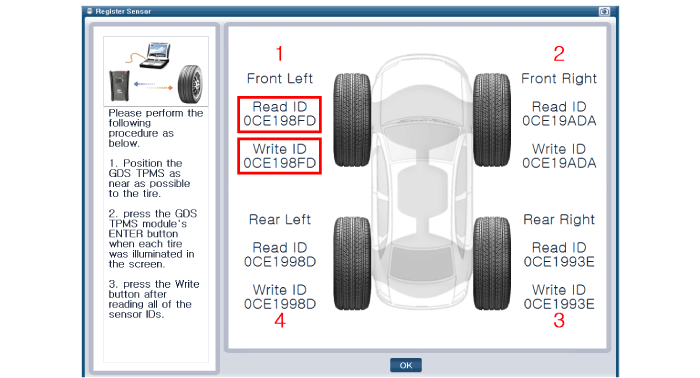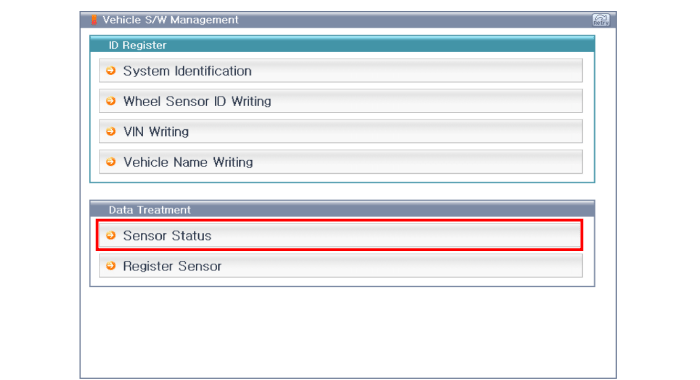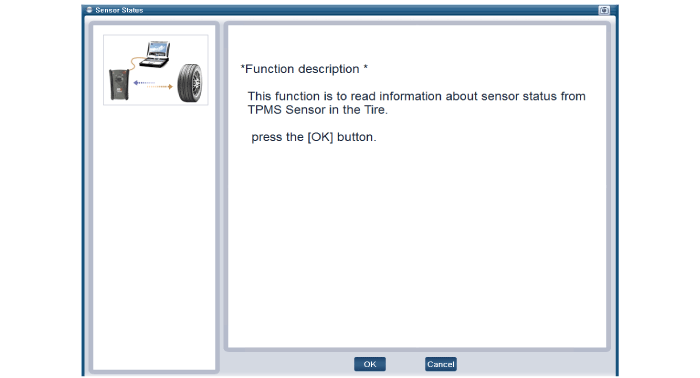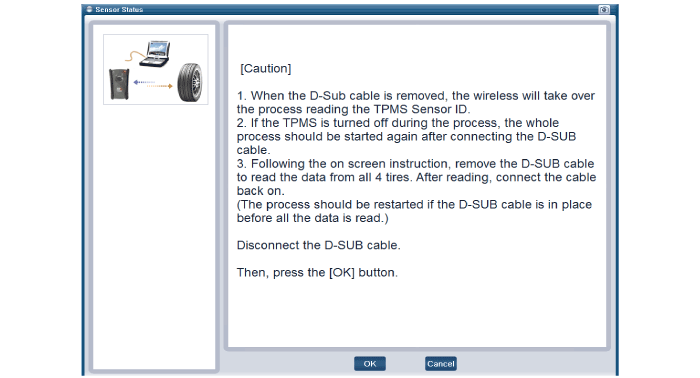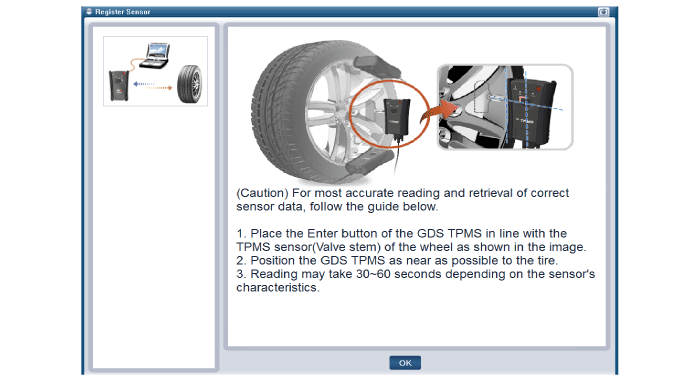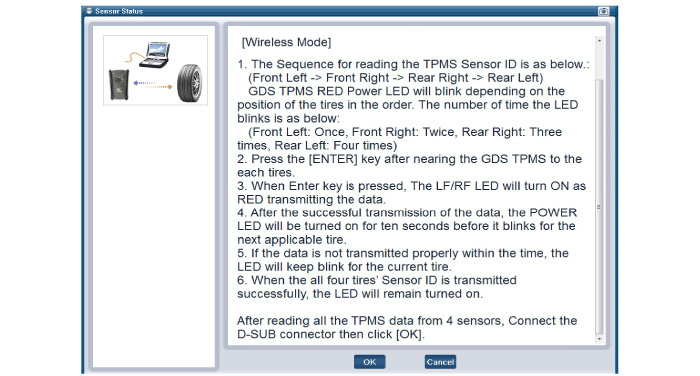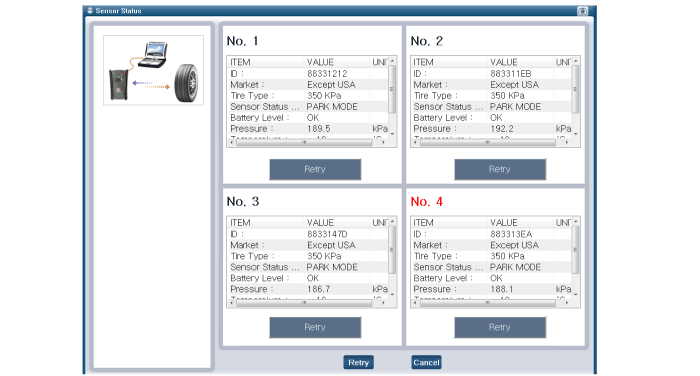Hyundai Elantra: Tire Pressure Monitoring System / TPMS Sensor Repair procedures
| Removal |
| 1. |
Remove the valve core and deflate the tire. |
| 2. |
Remove the side of the tire bead area from the wheel using tire changing machine .
|
| 3. |
Rotate the wheel clockwise.
|
| 4. |
The valve during transportation (air inlet portion of the
silver) deviated from its original location be sure to check whether the
original position of the valve (metal brackets) are assembled in
indented state. |
| 5. |
While tightening the nut on the valve as not to deviate from
the fixed position while rotating the valve to a fixed location (metal
brackets to fit inside) and push. The specified torque (8Nm) to tighten
the nut does not reuse. |
| 6. |
Contact with the rim so that the valve washer seals the valve hole put into.
|
| 7. |
Housing with two fingers holding the valve in the axial direction with one finger and push the valve.
|
| 8. |
Housing, the state must be visible laser marking.
|
| 9. |
When the valve is fully inserted so that the contact between
the sensor and the rim while keeping hands on the wheel nut tightening
will start Wed.
|
| 10. |
While maintaining the position of the valve and the sensor is mounted nut.
|
| 11. |
Apply tire soap or lubrication to the top and bottom tire beads.
|
| 12. |
To fit the bottom bead, position the sensor at the 5 o’clock position relative to the head on the tire changing machine
|
| 13. |
Place the tire on the rim so the bottom bead touches the edge
of the rim after the sensor (6 o’clock). Rotate the rim clockwise, and
push down on the tire at the 3 o’clock position to fit bottom bead.
|
| 14. |
After bottom bead is on tire, rotate the rim until the sensor
is at the 5 o’clock position relative to the head on the tire changing
machine. Push down on the tire at the 3 o’clock position and rotate the
rim clockwise to fit the top bead.
|
| 15. |
Inflate the tire until both beads seat.
|
| 16. |
In the case of TPMS sensor failure, TPMS sensor needs
learning. Faulty sensor is replaced new units, conduct learning of TPMS
sensors. |
| Inspection |
| 1. |
Sealing washer on the outside rim of hole to be compressed. |
| 2. |
The lower part of the valve housing, a fixed place (no metal brackets) should be located. |
| 3. |
Housing is at least one or more points on the surface of the rim should contact. |
| 4. |
The rim of the housing mounting height shall not exceed the height of the chin.
[Normally]
[Faulty]
|
| 1. |
Connect self-diagnosis connector(16pins) located in the lower
of driver side crash pad to self-diagnosis device, and then turn the
self-diagnosis device after key is ON. |
| 2. |
Select the "vehicle model" and "TPMS" on GDS vehicle selection screen, then select OK. |
| Diagnostic Procedure Using a Diagnostic Instrument |
| 1. |
Connect the diagnostic instrument to the self-diagnostic
connector (16-pin) beneath the crash pad on the side of driver's seat,
and then turn on the ignition to activate the diagnostic instrument. |
| 2. |
In the GDS Vehicle Type Selection menu, select "Vehicle Type" and "TPMS" System, and then opt for "OK."
[Initial Screen for Sensor ID Registration]
[Register Sensor function description]
[Preparation phase sensor measurements]
[Sensor register method 1]
[Sensor register method 2]
[Sensor register method 3]
[Sensor register method 4]
[Sensor register method 5]
[Sensor Status initialization]
[Sensor function description]
[Preparation phase sensor measurements]
[Sensor measurements 1]
[Sensor measurements 2]
[Sensor Status]
|
 TPMS Sensor Description and Operation
TPMS Sensor Description and Operation
Description
1.
General description
WU is a sensor placed in the tire that reports pressure and temperature.
The WU is mounted inside the wheels, fixed to the valve. The angle between the valve ...
 TPMS Receiver Description and Operation
TPMS Receiver Description and Operation
Description
TPMS Receiver : BCM(body control module) integrated management
1.
Mode
(1)
Virgin State
A.
The receiver as a sole part is shipped in this state. Replacement parts should therefo ...
Other information:
Hyundai Elantra AD (2016-2020) Service Manual: Valve Body Components and Components Location
Components Location
1. Solenoid valve support bracket2. Solenoid valve support bracket (Directly solenoid)3. Line Pressure Control Solenoid Valve4. Torque Convert Control Solenoid Valve (T/CON)5. ON/OFF solenoid valve6. Overdrive Clutch Control Solenoid Valve (OD/C)7. Underdrive Brake Control S ...
Hyundai Elantra AD (2016-2020) Owners Manual: Blind-spot Collision Warning (BCW)
System Description
Blind-Spot Collision Warning (BCW)
The Blind-Spot Collision Warning (BCW) system uses radar sensors in the rear
bumper to monitor and warn the driver of an approaching vehicle in the driver's
blind spot area.
1) Blind-Spot Area
The blind spot detection range varies r ...

